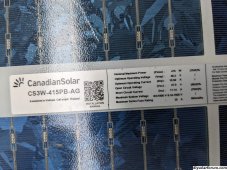joshjhayes
New Member
I'm being indecisive and could use some advice. I have my panels mounted and wired in 2 series arrays (4x 415watt panels), I have a 3000 watt renogy inverter, and 2 litime 100ah tm batteries in parallel. 2x victron 100/50 controllers are en route.
So my conundrum is that the chargers won't get full wattage in perfect sun scenario and my wiring is 1/0. I don't anticipate using full inverter power for long periods of time hence I justified the small(ish) wire. I also figure in real world I'll be lucky to get full 100 amps out of the controllers and over panelling isn't a terrible thing. But if I switch to 24v that will solve those 2 "worries" Also, to switch to 24v would I need a 12v battery or would the system run directly off a step down converter? Can I keep cheap 12v battery and charge with a cheap mppt? Or is step down converter better?
I'm within return window with Amazon so I could return inverter and even downgrade to 100/30 controllers...
So my conundrum is that the chargers won't get full wattage in perfect sun scenario and my wiring is 1/0. I don't anticipate using full inverter power for long periods of time hence I justified the small(ish) wire. I also figure in real world I'll be lucky to get full 100 amps out of the controllers and over panelling isn't a terrible thing. But if I switch to 24v that will solve those 2 "worries" Also, to switch to 24v would I need a 12v battery or would the system run directly off a step down converter? Can I keep cheap 12v battery and charge with a cheap mppt? Or is step down converter better?
I'm within return window with Amazon so I could return inverter and even downgrade to 100/30 controllers...




